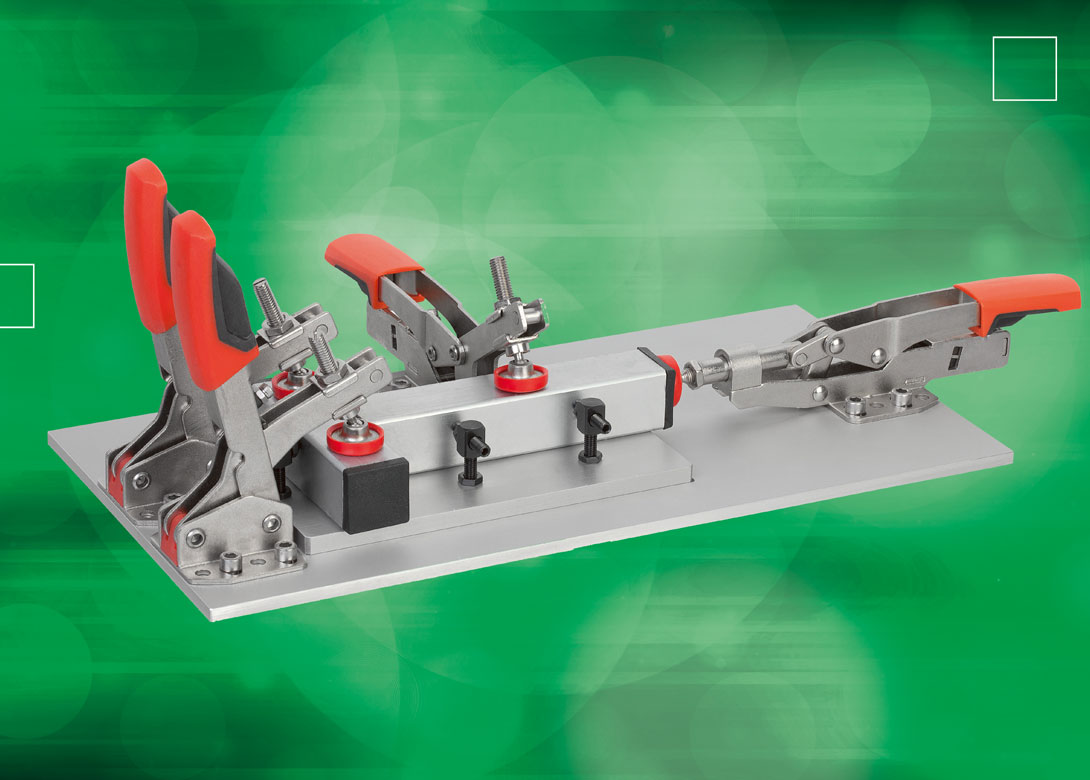
Although widely available and suitable for many applications, toggle clamps are often neglected and aren’t first to mind for design engineers. Paul Mulvey, sales manager at norelem UK, explains best practice uses for toggle clamps and how they benefit users.
G-clamps, cam clamps, clamps with adjustable risers, centring clamps and many more - in the world of workholding and clamping things down, we’re spoilt for choice. However, much like one size does not fit all, one clamp does not work for all applications. Yet, we can often fall into the trap of using clamps we know well and trust. It’s only natural of course, however by falling into this routine, efficiencies can be lost, the method of clamping may not be the most optimum choice, and hazards can be introduced.
For example, some clamps were found wanting in one of the biggest engineering projects of recent times across in Canada. Known as ‘The Big Lift’, the Angus Macdonald Bridge in Halifax had to be lifted, and road had to be replaced.
During the project a near-miss accident happened. When workers went to remove a clamp, one sprang off and landed on the deck because it was load-bound. Although nobody was hurt, the whole project had to be stalled until an optimum safety solution was found. This is of course a high-profile engineering project with many factors and complexities, but the notion remains – the wrong clamp choice can be harmful to work, and to life.
This is where toggle clamps come in. Although they come in many guises and forms that suit a variety of applications, they aren’t the most widely known or used clamps in the engineering industry. Here’s why you should give them due consideration.

High clamping force with little expenditure
Toggle clamps offer some of the highest clamping forces available. They work according to the knee-lever principle and can be operated with very little expenditure of force. This principle works by pressing the ‘knee’ joint of the lever to secure the object in question. Once the three points of the joint are in a line - where the ‘knee’ is straightened and locked - it is no longer possible for the object to be pressed back by a counterforce.
Self-locking is guaranteed when the dead centre position (alignment of the three joints) is exceeded, while the clamping force can be adjusted by setting the thrust screw accordingly.
Toggle clamps are an optimal clamping solution in drilling, welding, grinding and inspection fixtures. For the timber industry, they have saved timber from extreme deformations when bonding or assembling fragile sheets, as the clamping force is controllable.

Having spent a decade in the fastener industry experiencing every facet – from steel mills, fastener manufacturers, wholesalers, distributors, as well as machinery builders and plating + coating companies, Claire has developed an in-depth knowledge of all things fasteners.
Alongside visiting numerous companies, exhibitions and conferences around the world, Claire has also interviewed high profile figures – focusing on key topics impacting the sector and making sure readers stay up to date with the latest developments within the industry.






